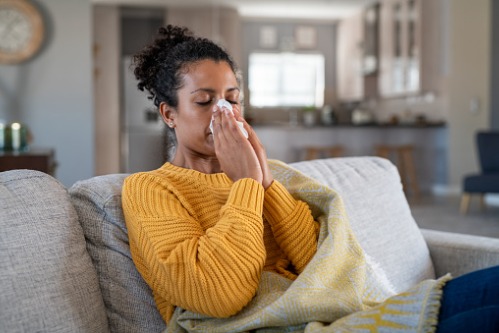
When Is Allergy Season in Massachusetts?
As Massachusetts transitions through its vivid seasons, each one brings its unique charm and, for many, a less welcome gift: allergies. Unlike some regions where allergy season is short-lived, Massachusetts sees a range of allergens spread across different parts of the year. This diversity makes it essential for those living in or visiting the state to stay well-informed and prepared.
Allergy Seasons in Massachusetts
Allergy season in Massachusetts typically begins in early spring and can last until the first frost in fall. During this time, various allergens, including pollen from trees, grass, and weeds, become pervasive, triggering allergic reactions in many individuals. This period varies each year but generally spans from March through October, with peak intensities occurring in late spring and early summer.
Spring: The Onset of Pollen
As the snow melts and the first buds of spring appear, so does the pollen from trees. Starting in March, tree pollen levels begin to rise, causing sneezing, congestion, and itchy or watery eyes in those with allergies.
The biggest culprits of tree pollen during this time include:
- Ash
- Birch
- Elm
- Maple
- Oak
- Pine
- Hickory
- Willow
- Mulberry
Spring allergy exposure can cause symptoms like sneezing, congestion, itchy eyes, and asthma flare-ups in allergy sufferers. It’s recommended to stay inside during early mornings or windy days when pollen is most prevalent. Using air purifiers, keeping windows shut, and changing clothes after outdoor activities can help minimize exposure and ease symptoms.
Summer: The Rise of Grass Pollen
Grass pollen takes center stage from late May through July, challenging those with sensitivities. The most common culprits are:
- Bermuda
- Timothy
- Redtop
- Ryegrass
- Sweet vernal
- Orchard grasses
Symptoms, similar to tree pollen reactions, including skin rashes, can be managed by mowing the lawn regularly to prevent pollen spread and keeping windows closed during peak times to reduce indoor exposure. Additionally, limiting outdoor activities when pollen counts are high is also recommended.
Fall Allergies: Weeds and Mold
As fall approaches, ragweed pollen and mold spores become active allergens. Ragweed is a particularly potent allergy trigger in Massachusetts, with one plant producing grains of pollen that can travel hundreds of miles. This leads to continued symptoms like sneezing, coughing, and itchy eyes throughout the season.
Other allergy-causing weeds include:
- English plantain
- Mugwort
- Russian thistle
- Wormwood
- Marsh elder
- Amaranth
Mold spores, found in decaying leaves and damp areas, can also cause allergies to flare up during this time. Moreover, weed pollen and mold spores can cause symptoms similar to the common cold and bacterial infections, making it essential to seek medical attention if symptoms persist.
Winter: Combatting Indoor Allergies
Winter offers a brief respite from outdoor allergens, but indoor allergens such as dust mites and pet dander continue to be a concern. Maintaining good indoor air quality becomes crucial during these colder months. Regularly cleaning your living spaces and incorporating HEPA filters into your heating systems can significantly reduce indoor allergens, ensuring a healthier home environment.
Preparing for Allergy Season
Without proper preparation, allergy season can be a miserable experience. While Massachusetts may have a longer allergy season compared to other regions, there are various ways to minimize the impact of allergens and enjoy the state’s beautiful landscapes. When getting ready for allergy season, keep the following tips in mind.
Identify Your Allergens
The first step in battling allergy season is identifying the specific allergens that trigger your symptoms. Consulting with an allergy specialist can provide valuable insights through allergy testing. This process helps pinpoint the exact trees, grasses, or molds causing discomfort, enabling targeted treatments and preventive measures. Armed with this knowledge, individuals can work to avoid triggers or begin allergy immunotherapy.
Create an Allergen-free Environment
Creating an allergen-free environment is crucial in mitigating the effects of allergy season. This involves keeping windows and doors closed, using air purifiers, vacuuming regularly, and washing bedding frequently. Minimizing exposure to pets and limiting outdoor activities during peak pollen times can also help reduce symptoms.
Monitor Pollen and Mold Counts
Keep an eye on local pollen and mold counts to anticipate when allergens will be most prevalent. Many websites provide daily pollen reports for different regions, allowing individuals to plan their outdoor activities accordingly. Staying up-to-date with these counts can also help determine the effectiveness of preventive measures.
Monitor pollen count for your area here: https://www.pollen.com/.
Develop an Allergy Action Plan
Having a plan in place to manage allergy symptoms is vital. Medical professionals can help develop an individualized action plan, including medications, immunotherapy, or emergency procedures if severe reactions occur. It’s essential to regularly review and update this plan as needed.
Consult With an Allergy Specialist at Northeast Allergy
If you’re still struggling to manage your allergy symptoms effectively, it might be time to seek professional help. At Northeast Allergy, our team of experienced allergy specialists is ready to provide personalized care and strategies to make your allergy season as comfortable as possible. Don’t let allergies control your life —book an appointment with us today.



